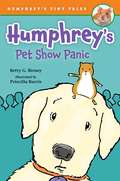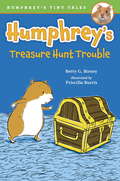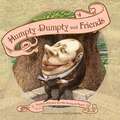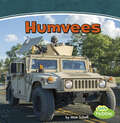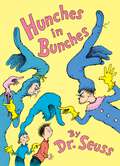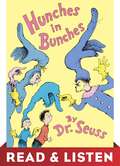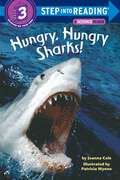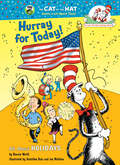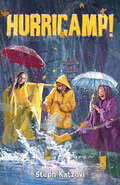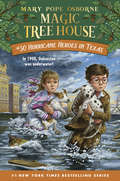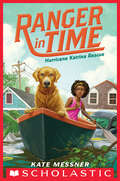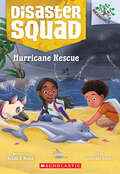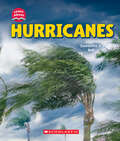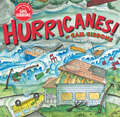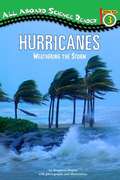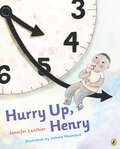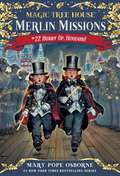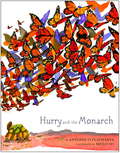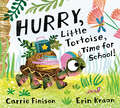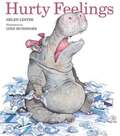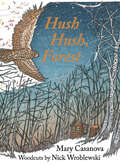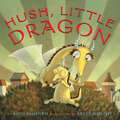- Table View
- List View
Humphrey's Pet Show Panic
by Betty G. Birney Priscilla BurrisHumphrey is the favorite pet in Room 26, but will he also be a favorite at the pet show?When A.J. brings Humphrey to the town pet show, he's sure Humphrey will win a prize. But Humphrey isn't convinced. There are all kinds of animals in the show--from dogs and cats to parrots and even something called a bearded dragon! Humphrey tries to impress the judges with some tricks, but when a dog noses a little too close to him, Og the Frog saves the day with the most impressive trick of all. And Humphrey realizes that a great friend is the best prize ever.
Humphrey's Treasure Hunt Trouble
by Betty G. Birney Priscilla BurrisHumphrey might be the only one who can solve the mystery of the missing treasure hunt prize! Garth has a surprise for his friends when they get to his party—a treasure hunt! Riddles are hidden all around his backyard and he put the prize in the best hiding spot of all—Humphrey’s cage. Only Humphrey knows something Garth doesn’t: someone stole the prize! Humphrey doesn’t know who took it, but he is good at solving mysteries. Can he put the clues together and save the treasure hunt? With sweet illustrations and an easy reading level, Humphrey’s Tiny Tales are hamster-iffic for emerging readers.
Humpty Dumpty and Friends: Nursery Rhymes for the Young at Heart
by Oleg LipchenkoMeet old favorites like Tweedle-dum and Tweedle-dee and, of course, Humpty Dumpty. Then make new friends with some less-known rhymes like Robin the Bobbin, the Three Wise Men of Gotham, and the Lion and the Unicorn. Oleg Lipchenko has selected twenty traditional rhymes to illustrate with his enormously skillful and witty images. Perfect for gift-giving, this book demands to be shared. It is a book for both lovers of of art and of nursery rhymes.
Humvees: A 4d Book (Mighty Military Machines Ser.)
by Matt ScheffWith power and versatility, Humvees roll into battle. Leave other vehicles in the dust as you learn all about the military's toughest troop of terrain vehicles. Little Pebble books have an ATOS level of 1.0 or below. Bring augmented reality to your students by downloading the free Capstone 4D app and scanning for access to awesome videos!
Hunches in Bunches (Classic Seuss)
by Dr. SeussWhat&’s a person to do when there is so much to do? Dr. Seuss adds his signature spin to the age-old dilemma of indecisiveness in his rhyming picture-book classic Hunches in Bunches. Go outside, play video games, eat a pizza, do homework? Whether you have a &“four-way hunch,&” a &“nowhere hunch,&” or an &“up hunch,&” Dr. Seuss and his unmistakable one-of-a-kind advice will ensure that readers of all ages won&’t get &“ga-fluppted.&”
Hunches in Bunches: Read & Listen Edition (Classic Seuss)
by Dr. SeussWhat&’s a person to do when there is so much to do? Dr. Seuss adds his signature spin to the age-old dilemma of indecisiveness in his rhyming picture-book classic Hunches in Bunches. Go outside, play video games, eat a pizza, do homework? Whether you have a &“four-way hunch,&” a &“nowhere hunch,&” or an &“up hunch,&” Dr. Seuss and his unmistakable one-of-a-kind advice will ensure that readers of all ages won&’t get &“ga-fluppted.&”This Read & Listen edition contains audio narration.
Hungry, Hungry Sharks! (Step into Reading)
by Joanna ColeIs your child hungry for nonfiction? This Step 3 SCIENCE READER will be sure to attract new readers to the fascinating subject of SHARKS! Did you know that there were sharks on earth even before dinosaurs? Nothing is more exciting than sharks, and this title is packed with amazing facts about these fearsome undersea predators. Step 3 Readers are for children who are ready to read on their own.
Hunters Money Jar
by Charlotte GuillainA coin named Scratch lives with her friends in Hunter's money jar. The bills and coins know that Hunter is saving up for a skateboard, but there aren't enough of them yet. Join Scratch as she welcomes new friends to the jar. Together, can they help Hunter get that new skateboard?
Hurray for Today!: All About Holidays (Cat in the Hat's Learning Library)
by Bonnie WorthWith a little help from the Birthday Bird of Katroo, the Cat and Co. explain (in rhymed verse!) the origin of common holiday rituals such as lighting candles, dying eggs, and sending cards. Holidays include Christmas, Hanukkah, Kwanzaa, New Year’s, Groundhog’s Day, Valentine’s Day, President’s Day, St. Patrick’s Day—and that’s only through March! “The Cat in the Hat’s Learning Library shows young readers that books can be entertaining and educational at the same time. This is a wonderful series!”—Barbara Kiefer, Ph.D.Bonnie Worth is the author of the Cat in the Hat Learning Library titles If I Ran the Rain Forest, Great Day for Pup!, Oh Say Can You Seed? (winner of the 2003 Ohio Farm Bureau Children’s Literature Award), Wish for a Fish, and Oh Say Can You Say Di-No-Saur? She lives in Middletown, NY.Among his many other credits, Aristides Ruiz is the illustrator of all the Cat in the Hat Learning Library Books. He lives in Newark, NJ.
Hurricamp!
by Steph KatzoviTen-and-three-quarter-year-old Laura "Noodle" Newman had high hopes about going to sleepaway camp for the first time. Once she's there, however, Noodle is miserable. No one can help her get over her terrible homesickness. Things go from bad to worse when Noodle panics while talking on the camp's radio station. Noodle's moment to shine becomes a bout of stage fright as her bunkmates laugh at her. As a menacing hurricane heads up the coast, life at Camp Hillside turns upside down. Through the craziness, Noodle realizes that only one person can make her feel better: herself. Told in Noodle's witty, earnest, and distinctive voice, Hurricamp! emulates the quirkiness of Beverly Cleary's Ramona books combined with Judy Blume's relatable dialogue. Parents and children alike will identify with Noodle's vulnerabilities and the humorous lessons she learns on her adventures at Camp Hillside.
Hurricane Heroes in Texas: A Nonfiction Companion To Magic Tree House #30 - Hurricane Heroes In Texas (Magic Tree House (R) #30)
by Mary Pope Osborne Ag FordJack and Annie are caught out in the rain in the most dangerous Magic Tree House mission yet!Jack and Annie are on a mission! When the magic tree house whisks them back to Galveston, Texas, in 1900, they find out that a big storm is coming. But even though there is rain and wind, no one believes there is any danger. As the storm grows, seawater floods the city. Now everyone needs help! Jack and Annie have a little bit of magic and a lot of hope--but will it be enough?Did you know that there's a Magic Tree House book for every kid?Magic Tree House: Perfect for readers who are just beginning chapter booksMerlin Missions: More challenging adventures for the experienced readerFact Trackers: Nonfiction companions to your favorite Magic Tree House adventuresIf you're looking for Merlin Mission #30: Haunted Castle on Hallow's Eve, it was renumbered as part of the rebrand in 2017 as Merlin Mission #2.
Hurricane Katrina Rescue (Ranger in Time #8)
by Kate MessnerIn this historical adventure for middle grade readers, a dog travels through time and rescues a family in New Orleans during Hurricane Katrina.Ranger, the time-traveling golden retriever with search-and-rescue training, arrives in New Orleans as Hurricane Katrina approaches and residents start to evacuate the city. Ranger meets Clare Porter, who is searching for her grandmother. Once Ranger helps Clare find Nana, he takes shelter with them at their home in the Lower Ninth Ward, and they wait for Clare’s father to return from the gas station. But there’s no sign of him as hours pass and the weather gets worse. The wind picks up and rain pours down. And when the levees break, floodwaters dangerously rise, and Clare and Nana are separated. Can Ranger help Clare navigate the flooded streets to safety and back to her family?Praise for the first book in the Ranger in Time series:“This excellent story contains historical details, full-page illustrations, and enough action to keep even reluctant readers engaged.” —School Library Journal“The third-person narration expertly balances Ranger’s thoughts between the appropriately doglike (squirrels! bacon!) and the heroic (Ranger’s drive to find and protect).” —Kirkus Reviews“McMorris’s richly rendered illustrations heighten the plot’s many moments of danger and drama, and Messner incorporates a wealth of historical details into her rousing adventure story.” —Publishers Weekly
Hurricane Rescue: A Branches Book (Disaster Squad)
by Rekha S. RajanThe Disaster Squad is ready to save the day in this action-packed early chapter book series perfect for fans of the Magic Tree House series, or for kids who aren’t quite ready to read I Survived!Pick a book. Grow a Reader!This series is part of Scholastic's early chapter book line, Branches, aimed at newly independent readers. With easy-to-read text, high-interest content, fast-paced plots, and illustrations on every page, these books will boost reading confidence and stamina. Branches books help readers grow!Meet the Disaster Squad! Leela, Jaden, and the rest of the Jackson family travel the country and respond to natural disasters, helping people in need and rescuing animals along the way.In this second adventure, the Jacksons are called to Texas, where a hurricane is heading down the coast. Stormy skies, flooding streets, and crowded storm shelters... there are people and animals in danger! Will the Disaster Squad be able to weather the storm and lend a helping hand?With action-packed adventure and artwork on every page, Disaster Squad is the perfect series for any emerging reader!
Hurricane Watch (Let's-Read-and-Find-Out Science 2)
by Melissa StewartRead and find out about how hurricanes form, how scientists track the storms, and what you can do to keep yourself safe if one strikes in this colorfully illustrated nonfiction picture book.Winds whip. Waves crash. Rain pours down. A superstorm moves across the ocean and gets closer and closer to land. Hurricane watch! Perfect for budding meteorologists, and recognized as an Outstanding Science Trade Book by the National Science Teachers Association, Hurricane Watch is bursting with fascinating facts paired with engaging visuals and diagrams.This picture book also includes a Find Out More section with an activity on air pressure, web research prompts, and a glossary of storm and weather vocabulary. Both text and artwork were vetted by Dr. William J. Brennan of the National Oceanic and Atmospheric Administration for accuracy.This is a clear and appealing science book for early elementary age kids, both at home and in the classroom. It's a Level 2 Let's-Read-and-Find-Out, which means the book explores more challenging concepts for children in the primary grades. The 100+ titles in this leading nonfiction series are:hands-on and visualacclaimed and trustedgreat for classroomsTop 10 reasons to love LRFOs:Entertain and educate at the same timeHave appealing, child-centered topicsDevelopmentally appropriate for emerging readersFocused; answering questions instead of using survey approachEmploy engaging picture book quality illustrationsUse simple charts and graphics to improve visual literacy skillsFeature hands-on activities to engage young scientistsMeet national science education standardsWritten/illustrated by award-winning authors/illustrators & vetted by an expert in the fieldOver 130 titles in print, meeting a wide range of kids' scientific interestsBooks in this series support the Common Core Learning Standards, Next Generation Science Standards, and the Science, Technology, Engineering, and Math (STEM) standards. Let's-Read-and-Find-Out is the winner of the American Association for the Advancement of Science/Subaru Science Books & Films Prize for Outstanding Science Series.
Hurricanes (Learn About)
by Samantha S. BellLearn about wild weather events, including how to prepare for them, with this new series of fascinating books! Hurricanes are violent storms with high winds and a lot of rain. Experts say climate change is making them even more intense. Discover why hurricanes happen, how they are measured, and how we can prepare for them in Hurricanes, a perfect first introduction to the topic for young readers.About This Series:In the era of climate change, wild weather events such as hurricanes, tornadoes, heat waves, and blizzards are becoming more frequent and more destructive. Now more than ever, education around these topics is essential. Using age-appropriate language and easy-to-understand science, the books in this series will offer a first exploration of different wild weather events that can be unleashed on Earth: why they happen, how they are measured, and how we can prepare for them. Illustrated with arresting full-color photography and sprinkled with fascinating facts, these books will follow pioneering climate change curricula for early elementary grades across the United States.
Hurricanes! (New Edition)
by Gail GibbonsWhat in the world is a hurricane? In this age of extreme weather, this newly updated edition of Gail Gibbons' informative introduction to hurricanes, with safety tips included, answers that question.Imagine a force that can toss boats around like toys, wash away bridges, create waves as high as eighteen feet, and change the shape of a shoreline. With fierce winds and torrential rains, hurricanes can do all of these things. In this newly revised edition, vetted by weather experts, Gail Gibbons introduces readers to the concepts of hurricane formation, classification, weather preparedness, and the ever-evolving technology that helps us try to predict the behavior of these powerful storms. Extensive updates include refined definitions for hurricane-related vocabulary, updated information about the wind speeds that define hurricane categories, information on emergency preparedness, and more. As these weather disturbances become more frequent and more powerful, Hurricanes is the perfect introduction for children to this important and timely topic.With her signature clear, colorful paintings and well-labeled diagrams, Gail Gibbons' nonfiction titles have been called ""staples of any collection" (Kirkus Reviews) and offer clear, accessible introductions to complex topics for young readers beginning to explore the world.
Hurricanes: Weathering The Storm
by Stephen Marchesi Benjamin HojemHurricanes are in the news more than ever before. But how many kids really know the amazing science behind these spectacular and often deadly natural occurrences? Our newest All Aboard Science Reader offers tons of interesting information about the cause and effects of hurricanes alongside full-color photographs.
Hurry Up, Henry
by Jennifer LanthierA beautiful new picture book from an acclaimed author-illustrator team, showing the virtues of moving slowly in our modern world that's always hurryingHenry's mother and father and sister are always telling him to hurry up, and his best friend, Simon, never slows down. Henry doesn't like to be late. But he doesn't want to hurry, either. He likes to take his time and often sees things that his family miss in the rush. For Henry's birthday, Simon arranges for a special present that lets Henry take the time he needs -- with his whole family!
Hurry Up, Houdini! (Magic Tree House (R) Merlin Mission #22)
by Mary Pope Osborne Sal MurdoccaThe #1 bestselling chapter book series of all time celebrates 25 years with new covers and a new, easy-to-use numbering system! Abracadabra! Jack and Annie are on a mission for Merlin the magician. They’re looking for a secret of greatness from the best escape artist that ever lived, Harry Houdini. Using the magic tree house to travel back in time, Jack and Annie head to Coney Island to look for the elusive magician. How can they find the master of escape? It’s going to take some determination, a little bit of trouble, and a whole lot of magic! Formerly numbered as Magic Tree House #50, the title of this book is now Magic Tree House Merlin Mission #22: Hurry Up, Houdini! Did you know that there’s a Magic Tree House book for every kid? Magic Tree House: Adventures with Jack and Annie, perfect for readers who are just beginning chapter books Merlin Missions: More challenging adventures for the experienced reader Super Edition: A longer and more dangerous adventure Fact Trackers: Nonfiction companions to your favorite Magic Tree House adventures Have more fun with Jack and Annie at MagicTreeHouse.com!
Hurry and the Monarch
by Meilo So Antoine O Flatharta<P>When the beautiful orange Monarch on her fall migration route from Canada to Mexico stops to rest at Wichita Falls, Texas, she makes friends with an old tortoise called Hurry. <P>She tells him, "Maybe one day you'll break out of that shell, grow wings, and fly away," and then she is off again with millions of other Monarchs. <P>In the spring, she stops again at Hurry's garden just long enough to lay her eggs and head north to Canada. <P>Embedded in this lyrical and tender fictional presentation are the fascinating facts about the amazing 2,000-mile migration and the life cycle of butterflies. An afterword provides additional scientific data.
Hurry, Little Tortoise, Time for School!
by Carrie FinisonIt's the first day of school and Little Tortoise is worried. Can she get there on time?It's the first day of school and Little Tortoise is ready with a backpack filled with new school supplies. Little Tortoise can't wait to get to school and tries very hard not to be the last student there. But soon Cheetah, Llama, and even a snail on a scooter, overtake her.And then when she gets stuck in the gutter of the book, she's sure she'll be the last pupil to arrive! But the timely arrival of Mr. Sloth, her new teacher, changes everything. Gentle reassuring language full of wordplay, and bold and bright art by an up and coming artist offer students a comforting story about this new experience. Here's a fresh way to encourage reluctant students to be on their way.
Hurty Feelings
by Helen LesterFragility was a solid piece of work. But despite her sturdy exterior, Fragility was fragile. Anything and everything hurt her feelings. In the most benign compliment, Fragility heard an insult. No one could even say she looked nice without evoking images of big, squishy cupcakes--since they are also nice--and causing Fragility to flop on the ground and weep. Fragility's friends stop speaking to her for fear of another fit, but Rudy, a very rude bully, has other ideas. In the face of real insults, will Fragility finally learn to take a compliment?
Hush Hush, Forest
by Mary CasanovaLyrical words and elegant woodcuts capture the quiet beauty of the forest as day fades to night and autumn gives way to the North Woods winter While we are tucked in, snug in warm blankets as we listen to bedtime stories, the woods around us whisper another tale. As the golden leaves waft through the lengthening shadows, the loon sings one last lullaby, the whirring hummingbird takes one last sip, the industrious beaver saws one last branch for her lodge. Here, in enchanting words and woodcuts, is the magic of night falling and winter approaching in the North Woods. Hush Hush, Forest peers through twilight&’s window at the raccoon preening, the doe and fawn bedding down, the last bat of the season flitting away. The owl surveys, the rabbit scurries, the bear hunkers, readying her den.Marking the rhythm between the falling leaf and the falling snowflake, picturing the rituals of creatures big and small as they prepare for the long winter&’s sleep, this charming book captures a time of surpassing wonder for readers of all ages—and bids everyone in the hushed forest a peaceful good night.
Hush, Little Dragon
by Boni AshburnAdorable dragons search for a bedtime snack in this “humorous children’s picturebook that turns a traditional child’s lullaby on its head” (Midwest Book Review).Baby and Mama dragon are almost ready to settle in for the night. But Baby can’t sleep until he gets a treat, so together they search the village for one. But there are so many options to choose from! Will they devour the town’s magician? Eat the three musketeers? Gobble up the princess? Or maybe dine on the mean old queen? Exhausted from their clever culinary adventure, Mama and Baby dragon settle down to a good night’s sleep in this warm, funny tale.Bringing a clever twist to the classic lullaby, “Hush, Little Baby,” this beautifully illustrated picture book will be a familiar yet original read for picky eaters—and readers—at bedtime and storytime.
